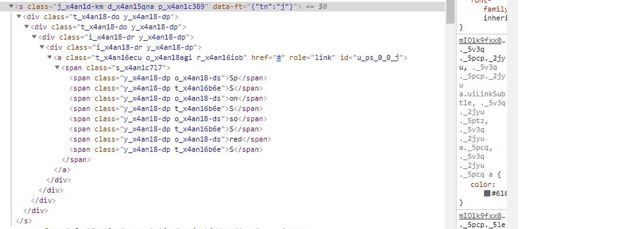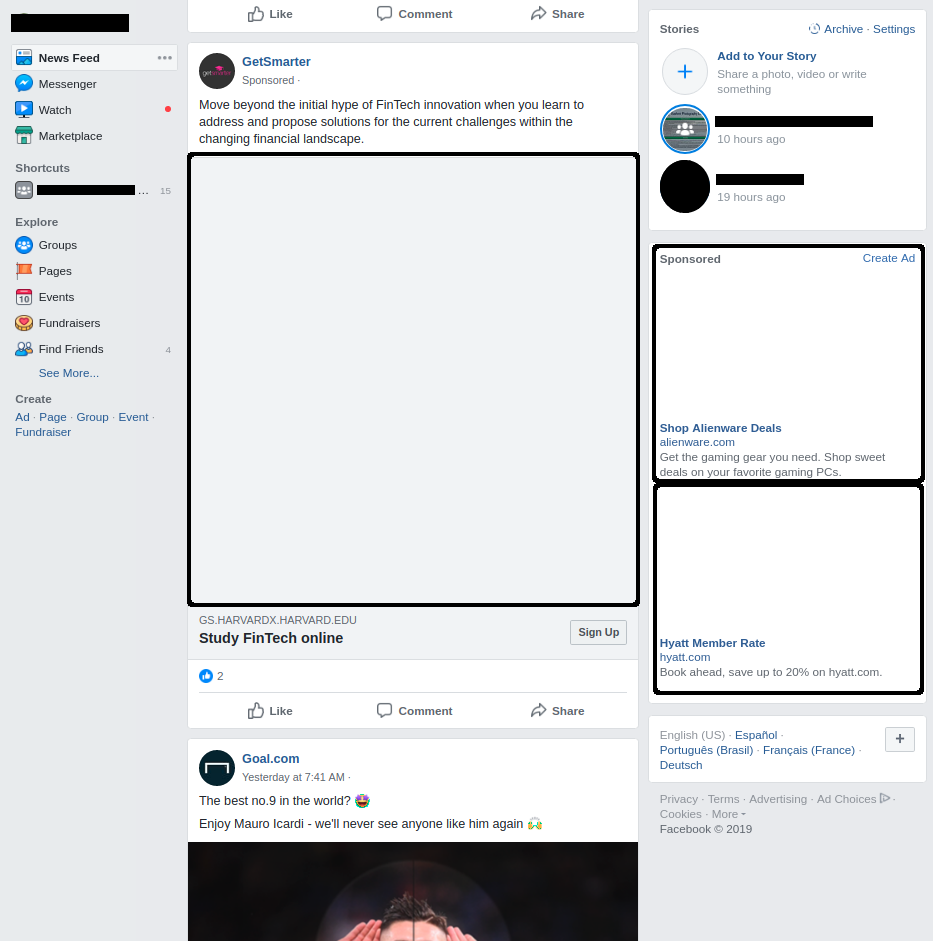Adblock Radio belongs to the family of next-generation ad blockers, so called "perceptual" as they consider content in the same way humans do. Perceptual ad blockers are a recent area of research. In this article I give more details about them and describe the next steps of the cat and mouse game between ad companies and ad blockers.
Parallel work on web content
On web, the classic way to block ads is to look at the source code of the pages and filter out requests that match an entry in the so-called filter lists. Some publishers, including Facebook, have fought this by obfuscating the content of their pages.

This has made some academic researchers from Princeton and Stanford build a new approach to filter ads, that looks at the rendered pages, in the same way our eyes do. From their 2017 paper, their perceptual ad blocker relies "on the key insight that ads are legally required to be clearly recognizable by humans" (source). It analyses web pages as images, identifies boxes and runs OCR on text to identify ads.
In this area of research, we should also note those recent and interesting initiatives: "Sentinel", by eyeo/Adblock Plus and "Percival", by academics and Brave researchers.

A quick heads-up on how Adblock Radio works
Adblock Radio features two different kinds of ad detectors and combines their independent results for the end user.
The first module runs machine learning algorithms that analyze the texture of audio. Is it speech over music and jingles ? Does it use acoustic compression to catch the ear ? Ads change quite often, but these patterns are almost universal, so that most new ads are caught by this filter, requiring limited maintenance.
Some of the ads get through, because they sound similar to actual content (music or plain speech). For those, here comes the second module. Adblock Radio crowdsources a database of ads and feeds a Shazam-like algorithm to detect what remains from the first filter.
The popularization of perceptual ad blockers will put advertisers under pressure
Ad-funded companies will find workarounds:
- controlling and locking the end users' platform, so that running an ad blocker is not possible anymore. For example, Google is about to restrict ad blockers in its Chrome browser (source). People caring about their own interests may want to consider alternatives, such as the open-source Firefox.
- blurring the lines between ads and actual content, so that ads can't reliably be removed anymore. Fortunately, journalists follow a code of ethics that theorically forbids such practise. But will it survive the pressure of ad dollars ?
- relying on adversarial machine learning. Adversarial machine learning can be used to circumvent the machine learning part of perceptual ad blockers. In a recent paper, researchers from Stanford University and the CISPA Helmholtz Center for Information Security have explored such technique to break common perceptual ad blockers, including Adblock Radio. I am extremely interested in those findings and ready to collaborate for further research on this topic. I do not too worry too much as Adblock Radio filter uses two independent layers (machine learning and acoustic fingerprinting recognition) that have to be simultaneously circumvented, making it harder than if there were only one.
Next steps in the cat and mouse game
Assuming that perceptual ad blockers will be able to hold back the ad business as we currently know it, I think media of the future will split in two groups:
- those who will heavily rely on product placement, like in Youtube influencers videos,
- those who will publish premium content worth subscribing for.
Ad blockers are not a solution, they are merely a counter power for users that are tired of ads. The real solution will be to find other ways to fund the media we consume. I support businesses in this domain, such as Flattr, Brave, Blendle and Pressmium.

